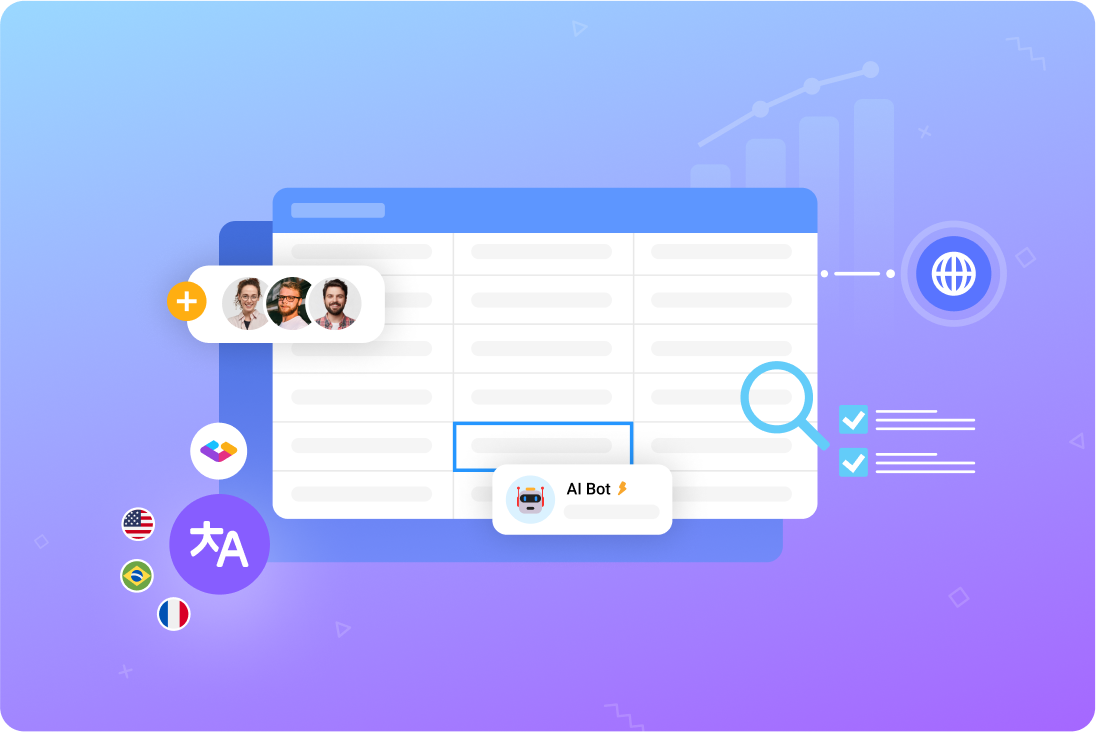What is localization technology?
Localization technology is the use of software-based tools, platforms, and systems for content management, translation, localization quality assurance, and other aspects of your process. Many solutions combine various types of localization technology, such as machine translation models, translation memories and localization glossaries, and automated content implementation.
How can localization technology improve your workflow?
The two chief benefits of localization technology are improvements in speed and quality.
-
Speed: Localization technology automates many of the manual processes that slow localization down. This frees your team up to focus on more important tasks that can’t be automated.
-
Quality: Many localization technology solutions are designed to preserve quality during the translation process. Translation memories and localization glossaries boost both accuracy and consistency, while QA tools keep errors to a minimum.
>> Learn more about localization quality assurance
When should you implement a localization technology solution?
There’s no one-size-fits-all answer to localization technology. While there are common principles to every good localization strategy, building the right one for your business is highly context-specific.
The choice to introduce localization technology early or later in your process depends on your needs, circumstances, and goals.
How do I know if I’m ready for localization technology?
Implementing a localization technology solution as soon as possible enables you to maximize the benefits it brings. But rushing in before your organization is ready can cause more problems than it solves.
Localization technology can best help you when:
-
Your workflow is agile. Localization technology is designed to enhance an agile process. If your team is still working waterfall-style — when you complete one process after the next in a rigid step-by-step process — restructure your process into an agile model before boosting it with technology.
-
Your localization team is centralized. When all localization personnel are grouped under the same umbrella, it’s simpler to restructure their workflow with new tools and platforms. Siloed teams will be more likely to “do their own thing” with little unity between their chosen systems.
-
You’ve obtained budget and executive buy-in. While many localization tools are priced fairly, they aren’t free. You’ll need to first obtain buy-in from relevant decision-makers while securing a budget for your chosen tools. Assemble a business case that demonstrates how your desired solutions can help your organization.
-
Your business is scalable. The efficiency-boosting effects of a good localization technology strategy are exponential. You’ll see far greater benefits across a global localization effort than when working in just a handful of languages.
-
Your company embraces innovation. Forward-thinking companies are more receptive to results-oriented changes in the way they work. If your company culture is more conservative, you’ll need to work much harder to get everyone on board with the new way of doing things.
-
You’ve established your brand style and voice. Crafting a brand takes time, and the same goes for strong content. If you’re just getting started, you may find it worthwhile to hone your brand voice in one market before rolling your campaigns and content out in others. A good style guide can help localization writers channel your brand in their respective languages.
What are the benefits of localization technology?
Localization technology streamlines your pipeline, boosts quality, and enables your team to prioritize more effectively. These changes can ripple across your business, getting you to market quicker while driving sales and customer acquisition.
Get to market faster
By automating much of the “busywork,” localization technology can shorten the time required to complete a project and ship your content. Your teams will bypass localization roadblocks in the development process and translation workflows alike with the right tools and platforms.
Streamline your pipeline
A localization content management system — also known as a translation management platform (TMP) — is a centralized repository for all the content in your project, in all the languages you’ll use. Everyone involved in the project, from translators to testers to developers, can push and pull content between your TMP and their respective workspaces.
With your team centered around a single source of truth, you’ll enhance collaboration and improve your overall results.
>> Learn more about managing content for localization
Boost acquisition, sales, and retention
A 2020 survey across 29 countries found that 76% of global shoppers preferred to buy products from websites in their native languages. Meanwhile, 40% of the respondents refused to shop at all with a website that didn’t support their native language.
The findings are clear: online shoppers prefer a localized experience. And thanks to the way localization technology solutions boost both efficiency and quality, they’re an ideal way to broaden your potential customer base.
Localize content as it’s created
Continuous localization is an agile process that allows you to localize content as it’s created, rather than waiting for the entire project to be completed in your source language. This is equally valuable for SaaS and GaaS providers as it is for ecommerce businesses constantly tweaking their project ranges.
When you localize alongside product development, you eliminate the traditional waiting period between these two processes and can launch in all your target markets at once.
Automate quality control
There are countless opportunities for error in a manual localization process, from translation mistakes to duplicate record IDs and coding changes that can break a finished product. Localization technology brings automated quality controls that prevent these mistakes and others from occurring in the first place.
Implement a localization technology solution that’s right for you
Localization technology is powerful, but if your organization isn’t ready for it, you won’t be able to enjoy its benefits anywhere near their fullest. The best place to start is with a platform that centralizes all your content while outfitting you with many of the most popular localization technology features and tools.
As a single source of truth for all your content — not just text, but images, videos, and audio files as well — Gridly gives all stakeholders what they need in one central location. And its familiar spreadsheet interface and gentle learning curve make it easy to introduce to your workplace.
Meanwhile, Gridly is overflowing with useful tools and features that bring a wide range of benefits to your doorstep, all in one package. Maintain quality with built-in controls, share content across platforms in seconds, manage projects with automated status tracking, and so much more.
Bring localization technology to your organization with a content management platform designed for localization from the ground up. Find out more about how Gridly can help your team.
>> Explore Gridly’s innovative feature set










